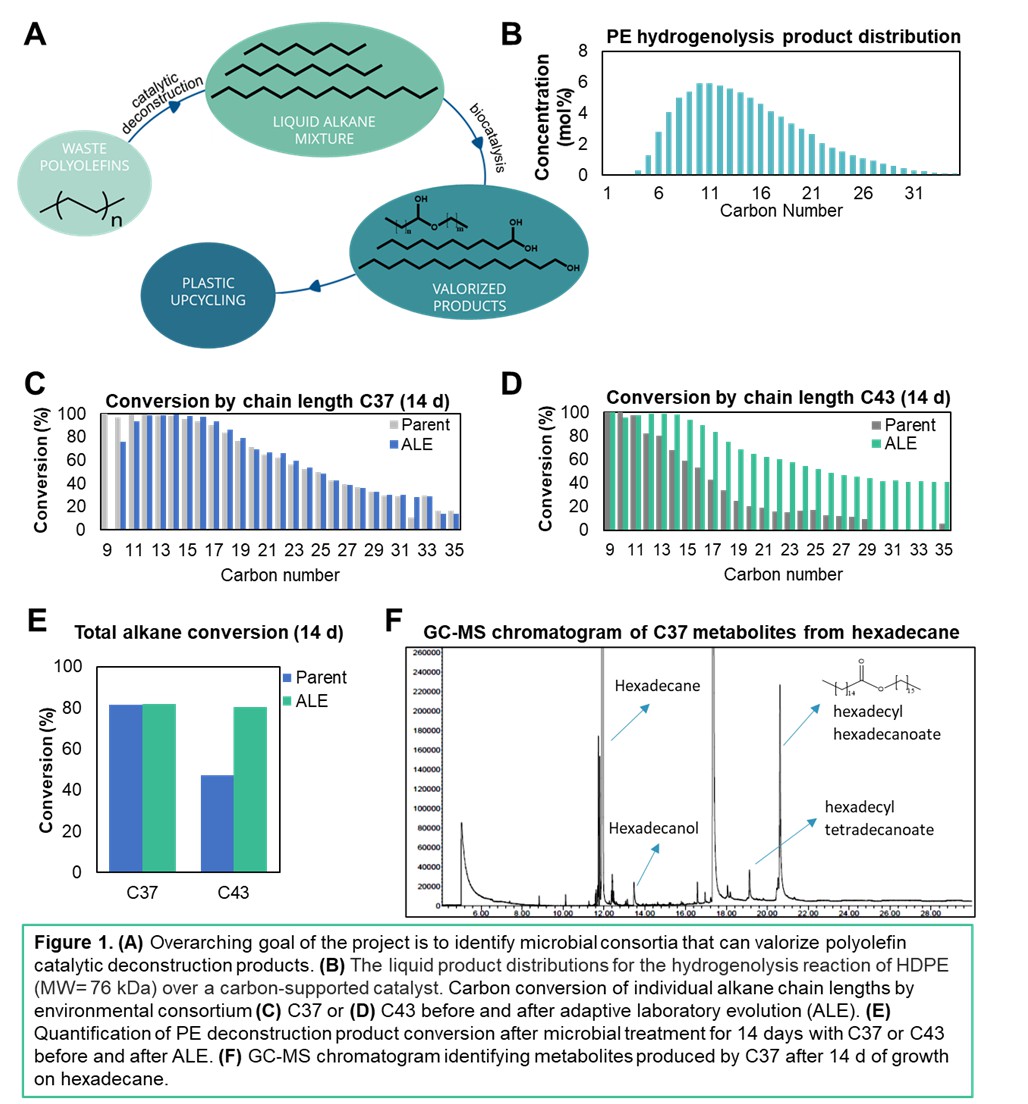2022 Annual Meeting
(473c) Combining Chemical and Biocatalysis to Breakdown and Upcycle Polyethylene
Authors
To date, there are few reports of microbial deconstruction or functionalization of the recalcitrant backbone of polyolefins. However, microbes can utilize many of the products from polyolefin deconstruction, including n-alkanes. Here we combine chemical catalysis with biocatalysis to valorize polyethylene deconstruction products. High density polyethylene (HDPE) was deconstructed via hydrogenolysis over a carbon-supported catalyst. The resulting n-alkane mixture (C4-C35) was then utilized as a feedstock for environmental microbial consortia collected from a local recycling plant after plastic enrichment. We tested two consortia and found that consortium 37 (C37) could convert ~80% of the alkane mix feedstock after 14 days, while consortium 43 (C43) converted ~40% of the alkane mix. We utilized adaptive laboratory evolution (ALE) to select for enhanced alkane utilization by the two consortia. The consortia were grown on a mixture of n-alkane standards as the sole carbon source and passaged three times. The resulting adapted consortia were then tested for utilization of the polyethylene deconstruction products. We found that adapted C37 had minimal improvements as compared to the parent consortia, and in fact had poorer utilization of smaller chain length alkanes. However, adapted C43 had significant improvements in alkane utilization, with a more than 100% increase in utilization of alkanes with C20 chain lengths or longer, and a 70% increase in total alkane utilization. We determined using GC-MS that C37 produced hexadecanol, hexadecanoic acid, hexadecyl tetradecanoate and hexadecyl hexadecanoate (wax esters) after growth on hexadecane as a model compound. Wax esters have considerable industrial value, with the longer chain lengths (C32-C36) of highest value. Using environmental consortia, a complex mixture of n-alkanes derived from waste polyethylene can be valorized to long-chain alcohols, fatty acids and wax esters. This demonstrates that environmental consortia from plastic-enriched environments can be combined with chemical catalysis to upcycle waste polyethylene.
